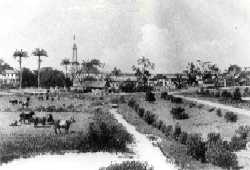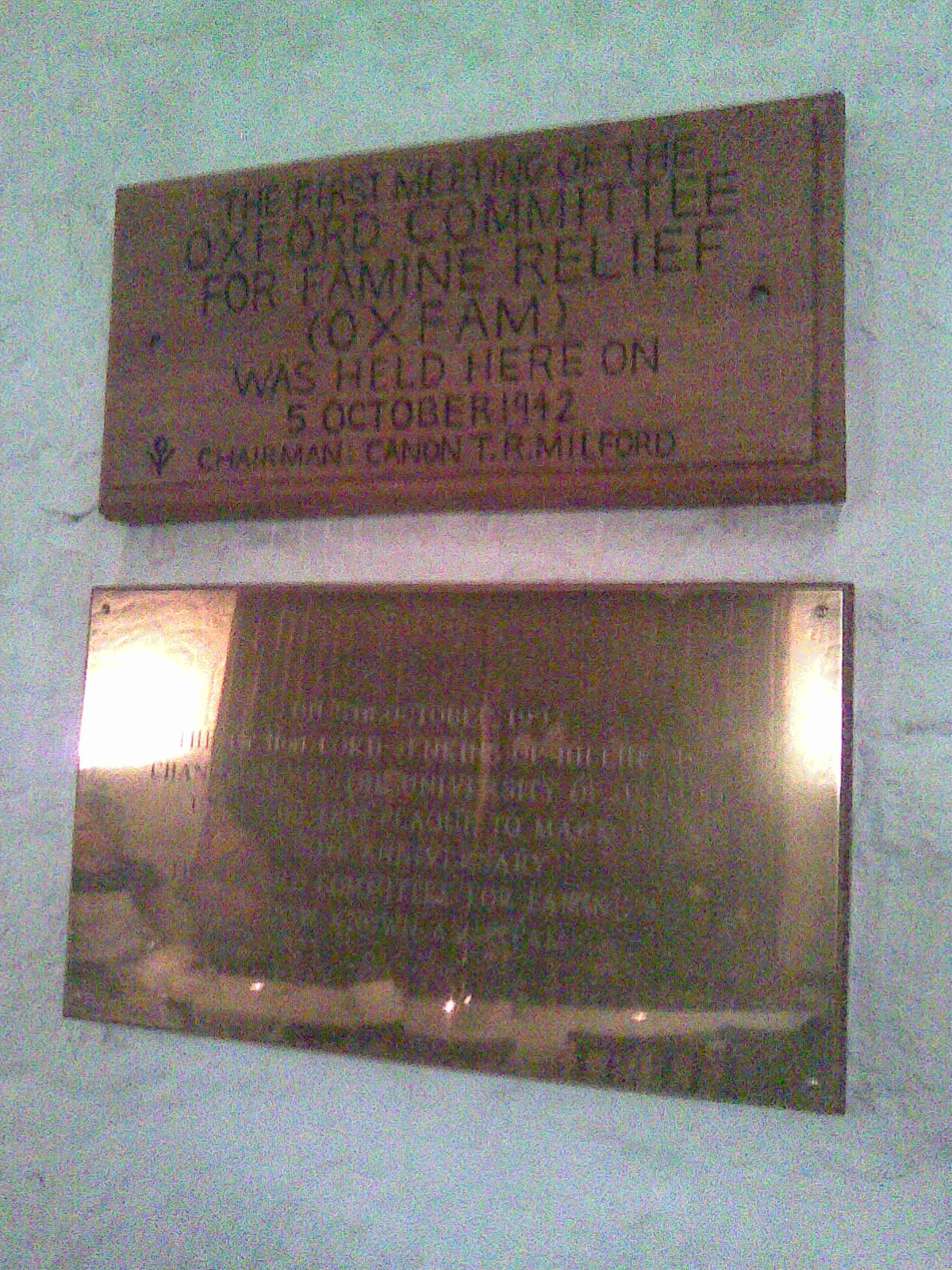|
Jean La Rose
Jean La Rose (born 6 May 1962) is an Arawak environmentalist and indigenous rights activist in Guyana. She was awarded the Goldman Environmental Prize in 2002 for her work to halt mining in their territories, to secure inhabitants full rights to traditional lands, and to save Guyana's forests.Goldman Environmental PrizeJean La Rose (Retrieved on November 10, 2007) She is the Executive Director of Amerindian Peoples Association which was founded in 1991, La Rose joining in 1994. She worked with Oxfam charities for funding. According to La Rose, bringing indigenous issues to the national stage is to "preserve the environment in a wholesome way. We want to do our farming yes, We want to preserve our cultural sites. We want to preserve our languages. We can still preserve many of these things if legislation and policy protects us." Personal life Born in Guyana's North West district, La Rose attended Rosa Roman Catholic School (Now Santa Rosa Primary), then obtained a scholarship t ... [...More Info...] [...Related Items...] OR: [Wikipedia] [Google] [Baidu] |
Santa Rosa, Guyana
Santa Rosa is a community in the Barima-Waini region of northern Guyana. Santa Rosa mission was established in 1840, and is one of the earliest Catholic Missions in Guyana. The village is part of the North West Amerindian District. Overview The population of the village and the mission is 913 people as of 2012, however the area has a population of 6,046 people as of 2013 making Santa Rosa is the largest Amerindian settlement in Guyana. This predominantly Arawak village is located on the Moruka River, 29 km from its mouth. The village is actually a collection of eleven settlements spread out in the Savannah wetlands along a ten-mile stretch of the Moruka River. As of 1996, the area is governed by the Moruca Land Council with Santa Rosa as the main settlement. The community began receiving electricity in 2004 when a diesel-powered generator was donated by Mr. Monty Niathally, proprietor of Variety Woods and Greenheart Limited. Santa Rosa contains a secondary school, Santa ... [...More Info...] [...Related Items...] OR: [Wikipedia] [Google] [Baidu] |
Goldman Environmental Prize
The Goldman Environmental Prize is a prize awarded annually to grassroots environmental activists. History Awardees are named from each of the world's six geographic regions: Africa, Asia, Europe, Islands and Island Nations, North America, and South and Central America. The award is given by the Goldman Environmental Foundation headquartered in San Francisco, California. The Prize is often referred to as the Green Nobel''.'' The Goldman Environmental Prize was created in 1989 by philanthropists Richard and Rhoda Goldman. The winners are selected by an international jury who receive confidential nominations from a worldwide network of environmental organizations and individuals. Prize winners participate in a 10-day tour of San Francisco and Washington, D.C., for an awards ceremony and presentation, news conferences, media briefings and meetings with political, public policy, financial and environmental leaders. The award ceremony features short documentary videos on each w ... [...More Info...] [...Related Items...] OR: [Wikipedia] [Google] [Baidu] |
Arawak
The Arawak are a group of Indigenous peoples of northern South America and of the Caribbean. The term "Arawak" has been applied at various times to different Indigenous groups, from the Lokono of South America to the Taíno (Island Arawaks), who lived in the Greater Antilles and northern Lesser Antilles in the Caribbean. All these groups spoke related Arawakan languages. Name Early Spanish explorers and administrators used the terms ''Arawak'' and '' Caribs'' to distinguish the peoples of the Caribbean, with ''Carib'' reserved for Indigenous groups that they considered hostile and ''Arawak'' for groups that they considered friendly. In 1871, ethnologist Daniel Garrison Brinton proposed calling the Caribbean populace "Island Arawak" because of their cultural and linguistic similarities with the mainland Arawak. Subsequent scholars shortened this convention to "Arawak", creating confusion between the island and mainland groups. In the 20th century, scholars such as Irving Ro ... [...More Info...] [...Related Items...] OR: [Wikipedia] [Google] [Baidu] |
Indigenous Peoples Of The Americas
In the Americas, Indigenous peoples comprise the two continents' pre-Columbian inhabitants, as well as the ethnic groups that identify with them in the 15th century, as well as the ethnic groups that identify with the pre-Columbian population of the Americas as such. These populations exhibit significant diversity; some Indigenous peoples were historically hunter-gatherers, while others practiced agriculture and aquaculture. Various Indigenous societies developed complex social structures, including pre-contact monumental architecture, organized city, cities, city-states, chiefdoms, state (polity), states, monarchy, kingdoms, republics, confederation, confederacies, and empires. These societies possessed varying levels of knowledge in fields such as Pre-Columbian engineering in the Americas, engineering, Pre-Columbian architecture, architecture, mathematics, astronomy, History of writing, writing, physics, medicine, Pre-Columbian agriculture, agriculture, irrigation, geology, minin ... [...More Info...] [...Related Items...] OR: [Wikipedia] [Google] [Baidu] |
Georgetown, Guyana
Georgetown is the capital (political), capital and largest city of Guyana. It is situated in Demerara-Mahaica, region 4, on the Atlantic Ocean coast, at the mouth of the Demerara River. It is nicknamed the "Garden City of the Caribbean." It is the retail, administrative, and financial services centre of the country, and the city accounts for a large portion of Guyana's GDP. The city recorded a population of 118,363 in the 2012 census. All executive departments of Guyana's government are located in the city, including Parliament Building, Guyana, Parliament Building, Guyana's Legislative Building and the Court of Appeals, Guyana's highest judicial court. The State House, Guyana, State House (the official residence of the head of state), as well as the offices and residence of the head of government, are both located in the city. The Secretariat of the Caribbean Community, Secretariat of the international organization known as the Caribbean Community (CARICOM), with 15 member-stat ... [...More Info...] [...Related Items...] OR: [Wikipedia] [Google] [Baidu] |
Oxfam
Oxfam is a British-founded confederation of 21 independent non-governmental organizations (NGOs), focusing on the alleviation of global poverty, founded in 1942 and led by Oxfam International. It began as the Oxford Committee for Famine Relief in Oxford, UK, in 1942, to alleviate World War Two related hunger and continued in the aftermath of the war. Oxfam has an international presence with operations in 79 countries and 21 members in the Oxfam Confederation in Australia, Asia, Europe, the Middle East, North and Latin America and the Caribbean. Since 2005, Oxfam International has been involved in a series of controversies as it expanded, especially concerning its operations in Haiti and Chad. There have been criticisms of its management of operations in the UK as well. History Founded at 17 Broad Street, Oxford, as the Oxford Committee for Famine Relief by a group of Quakers, social activists, and Oxford academics in 1942 and registered in accordance with UK law in 1943 ... [...More Info...] [...Related Items...] OR: [Wikipedia] [Google] [Baidu] |
University Of Guyana
The University of Guyana, in Georgetown, Guyana, is Guyana's national and most prestigious higher education institution. It was established in April 1963 with the following Mission: "To discover, generate, disseminate, and apply knowledge of the highest standard for the service of the community, the nation, and of all mankind within an atmosphere of academic freedom that allows for free and critical enquiry." The University of Guyana offers more than 60 undergraduate and graduate programmes, including Natural Sciences, Engineering, Environmental Studies, Forestry, Urban Planning and Management, Tourism Studies, Education, Creative Arts, Economics, Law, Medicine, Optometry and Nursing. In 2016 the institution had an enrollment of around 8,000 students. To date, the institution has graduated more than 20,000 students, who have gone on to pursue various professional careers locally, regionally, and internationally. The university is also a major contributor to Guyana's public and ... [...More Info...] [...Related Items...] OR: [Wikipedia] [Google] [Baidu] |
Constitution Of Guyana
The Constitution of Guyana is the highest governing document in the Republic of Guyana. It came into effect on October 6, 1980, replacing the constitution enacted in 1966 upon its independence from the United Kingdom. The current Constitution of Guyana contains 12 chapters that are further divided into 232 articles. It also contains a preamble and an oath. Since its 1980 enactment, it has gone through multiple amendments. Pre-independence constitutions Guyana's complex constitutional history provides a useful means of understanding the conflict between local interests and those of Britain, the long-time colonial power. The colony's first governing document, the Concept Plan of Redress, was promulgated under Dutch rule in 1792 and remained in effect with modifications under British administration until 1928. Although revised considerably over the years, the Concept Plan of Redress provided for a governor appointed by the colonial power and for a Court of Policy that evolved ... [...More Info...] [...Related Items...] OR: [Wikipedia] [Google] [Baidu] |
Waini River
The Waini River is a river in the Barima-Waini region of northern Guyana. It flows into the Atlantic Ocean near the border with Venezuela. The upper portion of the river flows through the Guianian moist forests, while the lower Waini river flows through the eastern extent of the vast Orinoco Delta swamp forests before emptying into the sea. Features Almond Beach at the mouth of the Waini River is one of the most important nesting areas for leatherback, green, hawksbill and the olive ridley marine turtles. It is the only place in Guyana that has a large stretch of intact mangrove forest, brackish water and coastal swamp communities. There are three significant waterfalls along the Waini. The furthest up river is Kasatu Falls at . Settlements along the river include Santa Cruz and Santa Rosa, an Amerindian community. See also *List of rivers of Guyana *List of rivers of the Americas by coastline This list of rivers of the Americas by coastline includes the major coastal ... [...More Info...] [...Related Items...] OR: [Wikipedia] [Google] [Baidu] |
Kaieteur National Park
Kaieteur National Park is a national park located in the Potaro-Siparuni Region of Guyana, roughly 633 km (393.33 miles) south of Georgetown, the nation's capital, closer to the border with Brazil than to the Caribbean coast. It is widely considered the country's only national park, as the capital's National Park is a not a true wilderness reserve. Kaieteur is part of the Guianan moist forests ecoregion. The main tourist attraction in the park is Kaieteur Falls, considered the largest single-drop waterfall anywhere on earth, by volume of water. The Kaieteur National Park Act was enacted by the government to protect the region's wealth of natural resources, its unique natural features (such as the aforementioned Kaieteur Falls), its biodiversity of Amazonian flora and fauna, and for the several Amerindian tribes whom have lived and thrived in this forest for millennia. The Act is administered by the Kaieteur National Park Commission. There are organisms unique to this region that ... [...More Info...] [...Related Items...] OR: [Wikipedia] [Google] [Baidu] |
Guyanese Environmentalists
Guyanese may refer to: * Something of, from, or related to the country of Guyana * A person from Guyana, or of Guyanese descent. For information about the Guyanese people, see: ** Guyanese people ** Demographics of Guyana ** Culture of Guyana * Guyanese cuisine * Guyanese Creole See also *Guianese The Demographics of French Guiana are characterized by a young population with 44% below the age of 20 in 2017. The total population stood at 268,700 as of 1 January 2017. The demographic profile is a reflection of the territory's high fertil ..., of from, or related to the country of French Guiana {{disambig Language and nationality disambiguation pages ... [...More Info...] [...Related Items...] OR: [Wikipedia] [Google] [Baidu] |




